| [1]黎凌云,李建赤,梁江声,等.应用间歇性气体压缩装置预防人工髋关节置换术下肢深静脉血栓形成[J].中华关节外科杂志(电子版), 2013,7(3):333-335.
[2]应春柳,何玉珍,胡伊群,等.低分子肝素联合间歇使用充气压力泵预防髋关节置换术后下肢深静脉血栓形成的护理[J].护理与康复, 2013,12(1):41-42.
[3]Alves C, Batel-Marques F, Macedo AF. Apixaban and rivaroxaban safety after hip and knee arthroplasty: a meta-analysis. J Cardiovasc Pharmacol Ther. 2012;17(3) :266-276.
[4]Witt DM. Rivaraxaban and usual care had similar rate of recurrent VTE and bleeding in symptomat ic PE. Ann Intern Med. 2012;157(4):2-6.
[5]Deyer-Westendorf J, Lutzner J, Donath L, et al. Efficacy and safety of rivaroxaban or fondaparinux thromboppr phylaxis in major 0rthopaedic surgery-finding from the Ortho-tepregistry. J Thromb Haemost. 2012;10(10):2045-2052.
[6]Lassen MR, Ageno W, Borris LC, et al. Rivaroxaban versus enoxapa-rin for thromboprophylaxis after total knee arthroplasty. N Engl J Med. 2008;358(26):2776-2786.
[7]Cosmi B, Legnani C, Pengo V, et al. The influence of factor V Leiden and G2021 0A prothro mbin mutation on the presence of residual vein obstruction after idiopathic deep-vein thrombosis of the lower limbs.Thromb Haemost. 2013;109(3): 510-516.
[8]易疆莺,李浩,杏建东,等.低分子肝素联合间歇充气加压预防髋、膝关节手术后静脉血栓栓塞症[J].四川医学,2011,32(11): 1695-1698.
[9]顾广飞,王家骐.低分子肝素和利伐沙班在髋膝关节中的应用[J].国际骨科学杂志,2010,31(3):166-168.
[10]梁红海,冯文岭.低分子肝素联合间歇充气加压装置预防老年髋部骨折深静脉血栓形成56 例[J].中国药业,2012,21(7):68-69.
[11]刘雪晶,李晓允,任环宇,等.间歇充气加压联合低分子肝素预防下肢深静脉血栓形成的临床研究[J].护理研究,2011,25(3): 241-242.
[12]陈涛.低分子肝素联合间歇充气加压预防髋膝关节术后静脉血栓的效果[J].中国医学创新,2013,10(18):15-17.
[13]Jameson SS, Ryraaszewska M, Hui AC, et al. Wound Complications Following Rivaroxaban Administration: A Multicenter Comparison with Low-Molecular-Weight Heparins for Thromboprophylaxis in Lower Limb Arthroplasty. J Bone Joint Surg Am. 2012;94(17): 1554-1558.
[14]罗旭,刘洋,简明,等.两种预防人工关节置换术后下肢深静脉血栓形成方案的临床评价[J]. 医学临床研究,2011,28(11): 2040-2042.
[15]莫景木.关节置换术后下肢深静脉血栓形成及预防的研究进展[J].微创医学,2011,6(4):332-335.
[16]Manly DA,Boles J,Mackman N.Role of tissue factor in venous thrombosis.Ann Rev Phys. 2011;73:515-525.
[17]Deeks ED. Apixaban: a review of i ts use in the prevent ion of Venous throm boemboloism after knee Or hip replacement surgery. Drugs. 2012;72 (9):1271-1291.
[18]吴狄,利伐沙班与低分子肝素对髋关节置换术后深静脉血栓的预防效果的Meta分析[J].天津医药, 2013,25(5):30-32.
[19]Eriksson BI,Borris LC,Friedman RJ,et al. Rivaroxaban versus enoxaparin for thromboprophylaxi s after hip arthroplasty (RECORDlStudy).N Engl J Med. 2011;358(26): 2765-2775.
[20]Lassen MR, Ageno W, Borris LC, et al. Rivaroxaban versus enoxaparin for thromboprophylaxis after total knee arthroplasty. N Engl J Med. 2008;358(26):2776-2786.
[21]Turpie AG, Lassen MR, Davidson BL, et al. Rivaroxaban versus enoxaparin for thromboprophylaxis after total knee arthroplasty(RECORD4):a randomised trial. Lancet. 2009; 373(9676):1673-1680.
[22]邱贵兴.中国骨科大手术静脉血栓栓塞症预防指南[J].中华关节外科杂志(电子版),2009,3(3):380-383.
[23]杨军,王毅.创伤患者深静脉血栓预防的监测与个体化治疗[J].中华创伤杂志,2012,28(11):1054-1056.
[24]Yong BC,Jun DZ, Hui S, et al. Rivaroxaban Versus enoxaparin for hromboprophylaxi 8 after total hip or knee arthroplasty: a meta-analysi s of randomized controlled trials.Eur J Clin Pharnlacol. 2010; (66):1099-1108.
[25]常国祥,骆彩霞,门琦华,等.低分子肝素钠预防骨科大手术术后下肢深静脉血栓形成[J].中国现代药物应用, 2011,4(22):124-125.
[26]程丈俊,王俊文,任义军,等.利伐沙班与低分子量肝素在初次全髋关节置换术后深静脉血栓形成防治中的比较研究[J].中华创伤骨科杂志, 2012,6(14): 480- 483.
[27]农林. 利伐沙班预防人工全髋关节置换术后深静脉血栓的临床分析[J]. 中国卫生产业,2011,12(8):63-64.
[28]Kanaan AO,Silva MA,Donovan JK,et al.Meta-analysis of venous thromboembolism prophylaxis in medically ill patients. Clin Ther. 2007;29(11):2395-2405.
[29]Geets WH,Bergqvist D,Pineo GF,et al. Prevention of venous thromboembolism: American College of Chest Physicians Evidence-Based Clinical Practice Guidelines(8th edition). Chest.2008;133(6 Suppl):381S-453S.
[30]马骊,王欣,蒋丽华.人工髋关节置换后的深静脉血栓形成:发生因素及其预防策略[J].中国组织工程研究与临床康复, 2010,9(14): 1677-1680.
[31]丁冠男,李树人,潘振祥,等.巴曲亭对低分子肝素抗凝全髋置换术患者出血量及凝血功能影响的研究[J].中华流行病学杂志, 2014, 34(6):737-740.
[32]李晓东,安可英,孙国锋,等.低分子肝素预防老年髋关节周围骨折围术期下肢深静脉血栓的研究[J].重庆医学,2013,42(25):2964- 2965,2968.
[33]雷淑琴,董跃华,魏玉磊,等.间歇式充气压力治疗仪预防肺癌术后患者下肢深静脉血栓形成的研究[J].中国医药,2014,9(3): 335-337.
[34]胡洪波,张苏斌,李玉民.人工髋关节置换术研究进展[J]. 包头医学院学报,2011,11(4):136-137.
[35]曹玉强,王鹏,邸鸿强.人工髋关节置换术在老年股骨颈骨折中的应用体会[J].中国老年保健医学,2012,10(1):48-49.
[36]邱贵兴,杨庆铭,余楠生,等. 低分子肝素预防髋、膝关节手术后下肢深静脉血栓形成的多中心研究[J].中华骨科杂志,2006,26(12): 819-822.
[37]程波,闵苏,黎平,等.多模式防治策略预防全膝关节置换术后深静脉血栓形成的临床研究[J].重庆医学,2014,43(6):661-662,665.
[38]Hull RD, Pineo GF, Francis C,et al. Low-molecular-weight heparin prophylaxis using dalteparin in close proximity to surgery vs warfarin in hip arthroplasty patients: a double-blind, randomized comparison. The North American Fragmin Trial Investigators. Arch Intern Med. 2012;160(6):2199-2207.
[39]Parisi R,Visonà A,Camporese G, et al. Isolated distal deep vein thromdosis:efficafcy and safety of a protocol of treatment.Treatment of Isolated Calfthrombosis(TICT) Study. Int Angiol.2009;28:68-72. |
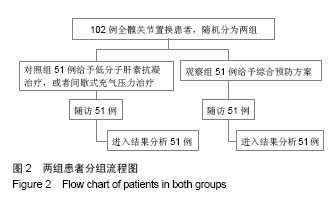
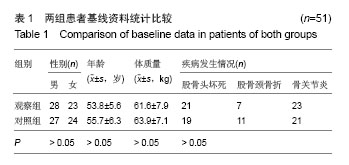
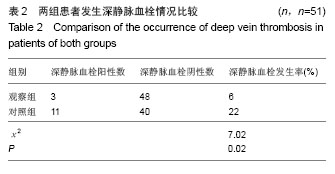
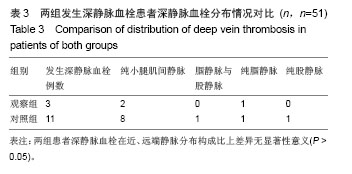
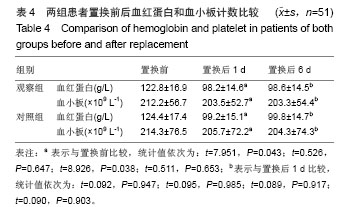
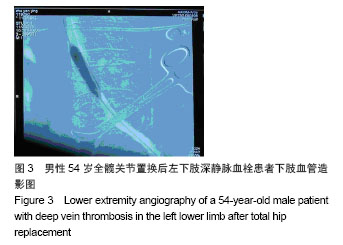
.jpg)